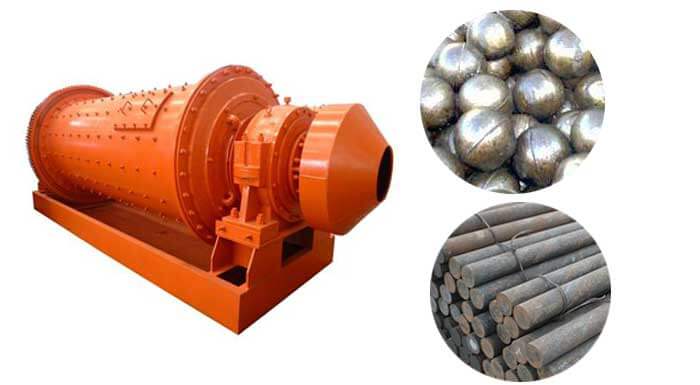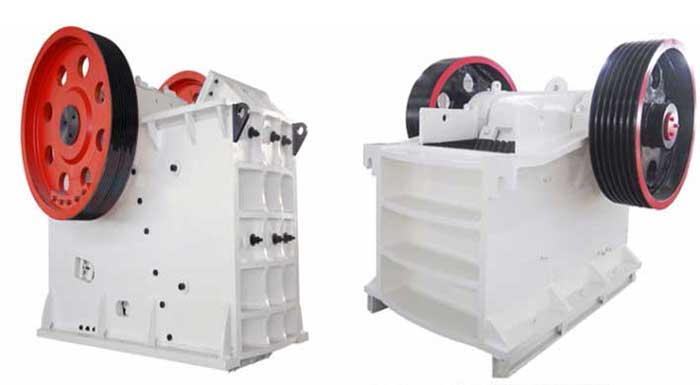14 Types of Ball Mill Troubleshooting and Solutions
Ball mills are widely used in the production industries of cement, silicate products, new building materials, refractory materials, fertilizers, black and non-ferrous metal beneficiation, and glass ceramics. They perform dry or wet grinding on various ores and other grindable materials.
Ball mill is currently a widely used mineral processing equipment, and there may be some common troubleshooting during its use. While analyzing the causes of the faults, this article also hopes to provide better solutions for reference.

1. Overheating or Melting of Ball Mill Bearings
Cause Analysis:
- 1. Insufficient lubrication, interruption of lubricating oil or insufficient lubricating oil volume;
- 2. Improper rotation of bearings or couplings;
- 3. The clearance between the journal and the bearing shell is too large or too small, resulting in poor contact;
- 4. Damaged oil groove prevents oil from flowing into the journal or bearing shells;
- 5. The cylinder or transmission shaft is bent;
- 6. The main bearing cooling water is insufficient or the water temperature is high.
Solution:
- 1. Stop the machine to identify the cause and solve the specific problem.
- 2. Check if the lubrication is in place;
- 3. Correctly install bearings or couplings;
- 4. Adjust the gap between the journal and the bearing shell, and check the oil groove in a timely manner;
- 5. Repair the cylinder and shaft neck;
- 6. Increase water supply, decrease water temperature, etc.
2. Ball Mill Unable To Start
Cause Analysis:
- 1. There is a problem with the motor system;
- 2. There are obstacles in the rotating part;
- 3. Long term shutdown, failure to remove materials and grinding bodies from the ball mill in a timely manner, causing damp materials to condense into blocks, and machine startup;
- 4. The grinding body does not fall off, increasing the load on the motor.
Solution:
- 1. Inspect and repair the motor system;
- 2. Clean up obstacles in the rotating part;
- 3. Clean the materials and grinding bodies inside the ball mill, remove clumped materials and some grinding bodies, and stir and mix the remaining materials and grinding bodies.

3. Reduced Discharge and low Output
Cause Analysis:
- 1. Excessive feeding amount or high hardness of grinding particle size;
- 2. The material has high moisture content, sticky balls are ground, and the grate is blocked;
- 3. Inappropriate grading of grinding materials;
- 4. Damage to the partition board, grinding material shifting, and unreasonable length of each compartment;
- 5. The powder selection machine has more coarse powder and recycled materials.
Solution:
- 1. Timely adjust the feeding amount and particle size;
- 2. Reduce material moisture and clean the grate;
- 3. Adjust the grinding material ratio;
- 4. Stop the machine and replace the partition board, adjust the length of each compartment;
- 5. Adjust the circulating load and inspect the powder selection machine.
4. Leakage of Material From Cylinder Body
Cause Analysis:
- 1. Loose lining plate bolts;
- 2. Wear of sealing gasket;
- 3. The lining plate bolt is broken.
Solution:
- 1. Tighten or replace bolts, install new sealing washers, and replace lining plates if necessary;
- 2. After replacing the new bolts, the sealing effect of the outer nut washer of the mill cylinder is better when using a waste belt for sealing.

5. Gear Transmission Emits An Impact Sound
Cause Analysis:
- 1. Excessive gear wear or poor lubrication;
- 2. Gear pressurization or assembly does not meet quality requirements;
- 3. Loose bearings or bearing anchor bolts.
Solution:
- Stop the machine for inspection and eliminate potential hazards.
6. Excessive Current and Unstable Current
Cause Analysis:
- 1. The loading capacity of the mill is too high;
- 2. Poor lubricating oil of bearings;
- 3. Excessive wear or malfunction of the transmission system;
- 4. Uneven weight around the lining plate.
Solution:
- 1. Adjust the loading capacity;
- 2. Increase fuel supply;
- 3. Inspect and repair transmission parts such as bearing shafts or gears;
- 4. Adjust the lining plate.
7. Abnormal oil pressure in the lubrication system
Cause Analysis:
- 1. Oil pipe blockage;
- 2. Insufficient fuel in the fuel tank;
- 3. Oil pump or oil pipe mixed with air or leaking oil;
- 4. The oil pump is malfunctioning.
Solution:
- 1. Stop grinding, check if the oil pipe is blocked or leaking, and promptly repair or replace the oil pipe;
- 2. Regularly replenish fuel supply;
- 3. Check if the oil pump has air or oil leakage, and promptly handle it.

8. Transmission Gear Tooth Thickness Wear
Cause Analysis:
- 1. Long term operation, material fatigue;
- 2. Gear vibration increases gear dynamic load;
- 3. Loose bolts in the transmission part;
- 4. Large bearing clearance;
- 5. The transmission shaft is bent or the centerline of the transmission part is skewed.
Solution:
- 1. If the wear exceeds 30%, replace the gear with a new one. If the wear is slight, turn over the large and small gears for use;
- 2. Identify the cause of the vibration and troubleshoot it;
- 3. Tighten the bolts;
- 4. Reduce the bearing gasket or replace the bearing;
- 5. Straighten and align.
9. Vibration Occurs After Gearbox is Started
Cause Analysis:
- 1. The coaxiality error between the electric motor and the reducer is large, which leads to the vibration of the electric motor and subsequently causes the vibration of the entire ball mill body;
- 2. The transmission coupling of the reducer, motor, and transmission shaft did not maintain high coaxiality, resulting in the two shafts not being concentric;
- 3. The outer ring of the ball mill bearing may not be fixed properly, causing vibration during rotation;
- 4. The outer ring of the bearing is not fixed properly.
Solution:
- 1. During the installation process, pay attention to improving the coaxiality accuracy of the motor and reducer to ensure stable and reliable connection between the two;
- 2. Tighten the connecting bolts of the coupling symmetrically with equal torque;
- 3. When the rotor is unbalanced, pull out the ball mill rotor and find the balance point again.
10. Motor Deceleration Vibration
Cause Analysis:
- 1. Bending of the shaft head;
- 2. Loose fastening screws;
- 3. Damaged bearings.
Solution:
- 1. Correct or replace the shaft;
- 2. Tighten the screws;
- 3. Identify the damaged bearing and replace it.

11. Bearing Temperature Too High, Hot, Smoking or Melting
Cause Analysis:
- 1. Fuel supply interruption or insufficient oil supply;
- 2. Poor oil quality or sand particles, debris, etc. entering the bearing;
- 3. The main bearing is installed unevenly and unevenly;
- 4. The transmission shaft of the cylinder is bent;
- 5. Lubricating oil cannot be supplied to the journal and bearing shells normally, resulting in poor lubrication and causing vibration;
- 6. Failure of fuel supply device, interruption or insufficient fuel supply;
- 7. The bearing clearance does not meet the requirements and there is poor contact with the shaft;
- 8. The viscosity of the lubricating oil is unqualified;
- 9. Improper installation of the coupling;
- 10. Insufficient cooling water or high cooling water temperature for the main bearing.
Solution:
- 1. Heat dissipation and cooling, then stop grinding for inspection and adjustment, and increase oil volume;
- 2. Clean and replace with new oil;
- 3. Adjust and level;
- 4. Adjust and align;
- 5. Inspection, repair, and adjustment;
- 6. Repair the fuel supply device;
- 7. Adjust the clearance, scrape and grind the bearing shells or repair the journal;
- 8. Replace lubricating oil with appropriate viscosity;
- 9. Adjust and align;
- 10. Increase water supply or decrease water supply temperature.
12. Local Wear of Cylinder Body
Cause Analysis:
- 1. The lining plate is not installed in a misaligned position;
- 2. Continue to operate after the lining plate falls off;
- 3. There is material erosion between the lining plate and the cylinder.
Solution:
- 1. The lining plates are installed in a staggered manner;
- 2. Repair or replace the lining plate;
- 3. Ensure that the lining plate is tightly attached to the cylinder.

13. Ball Mill Grinding Medium Blockage
Cause Analysis:
- 1. The particle size of the material itself is too large or the composition is complex;
- 2. Adding materials too quickly or too much;
- 3. Insufficient internal cleanliness of the ball mill, with residual materials or impurities;
- 4. The mismatch between grinding time and grinding speed leads to blockage.
Solution:
- 1. Ensure that the particle size of the materials entering the ball mill meets production requirements and avoid materials that are too large or too small from entering;
- 2. Reasonably control the feeding speed and amount based on the processing capacity of the ball mill;
- 3. Regularly clean and maintain the ball mill, remove residual materials and impurities, and ensure the normal operation of the equipment;
- 4. Adjust operating parameters in a timely manner based on material properties and the operating status of the ball mill to avoid blockages.
14. Abnormal Axial Movement of Ball Mill
Cause Analysis:
- 1. Local sinking of the foundation ground at the bottom of the machine leads to uneven installation of the grinding machine;
- 2. The bottom of the foundation is corroded due to oil leakage, and the bottom bolts are loose.
Solution:
- 1. The machine can be stopped for processing, and the sinking part can be adjusted by adding padding to make the bottom of the machine level;
- 2. Remove the secondary grouting layer eroded by oil, re bury the anchor bolts, adjust the mill, and tighten the anchor bolts.
 Ball Mill | Working Principle | Ball Mill Types
Ball Mill | Working Principle | Ball Mill Types Ball Mills vs Rod Mills | How To Choose Ball Mill or Rod Mill
Ball Mills vs Rod Mills | How To Choose Ball Mill or Rod Mill 20+ Common Faults of Jaw Crusher with Solutions
20+ Common Faults of Jaw Crusher with Solutions 11 Common Faults of Sand Washer and Solutions
11 Common Faults of Sand Washer and Solutions




One of my client need 18 mt per hr grinding capacity ball mill for rock phosphate grinding. Can you send offer.